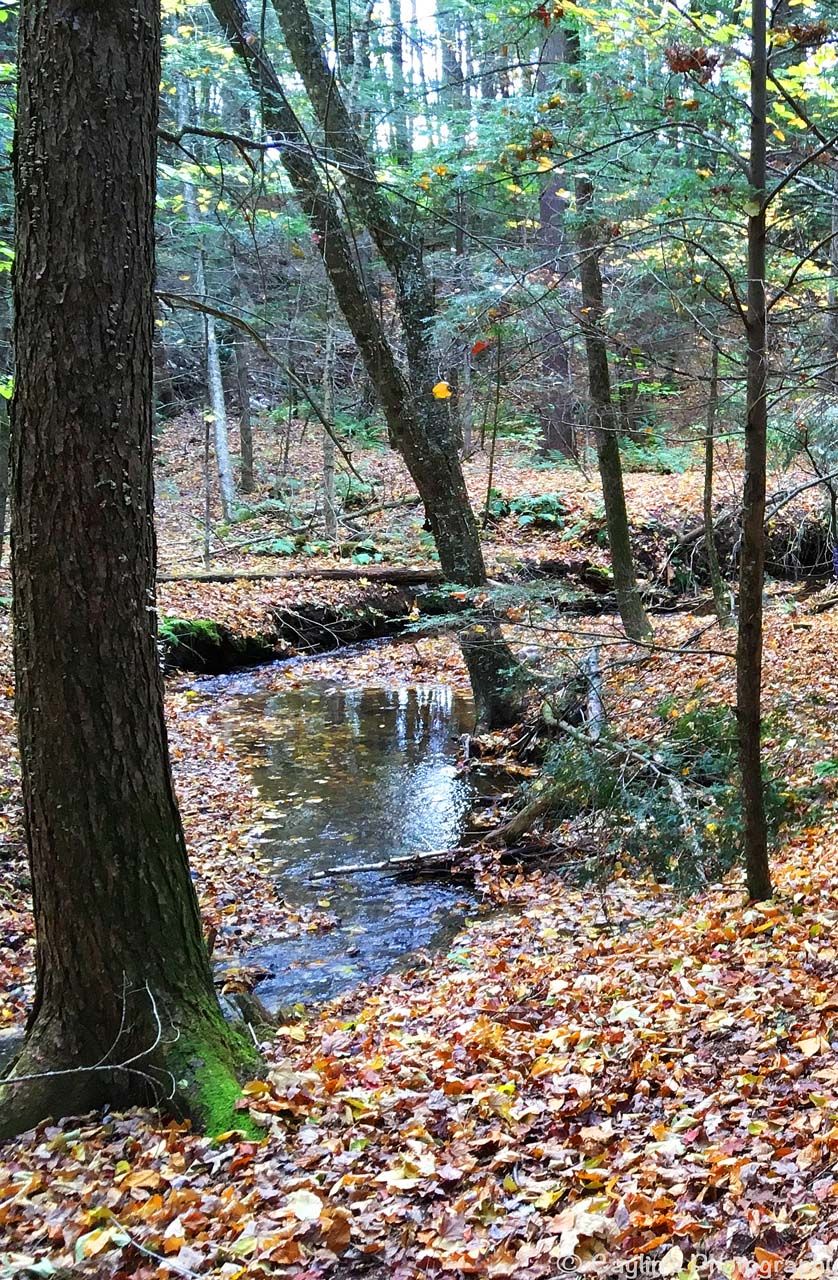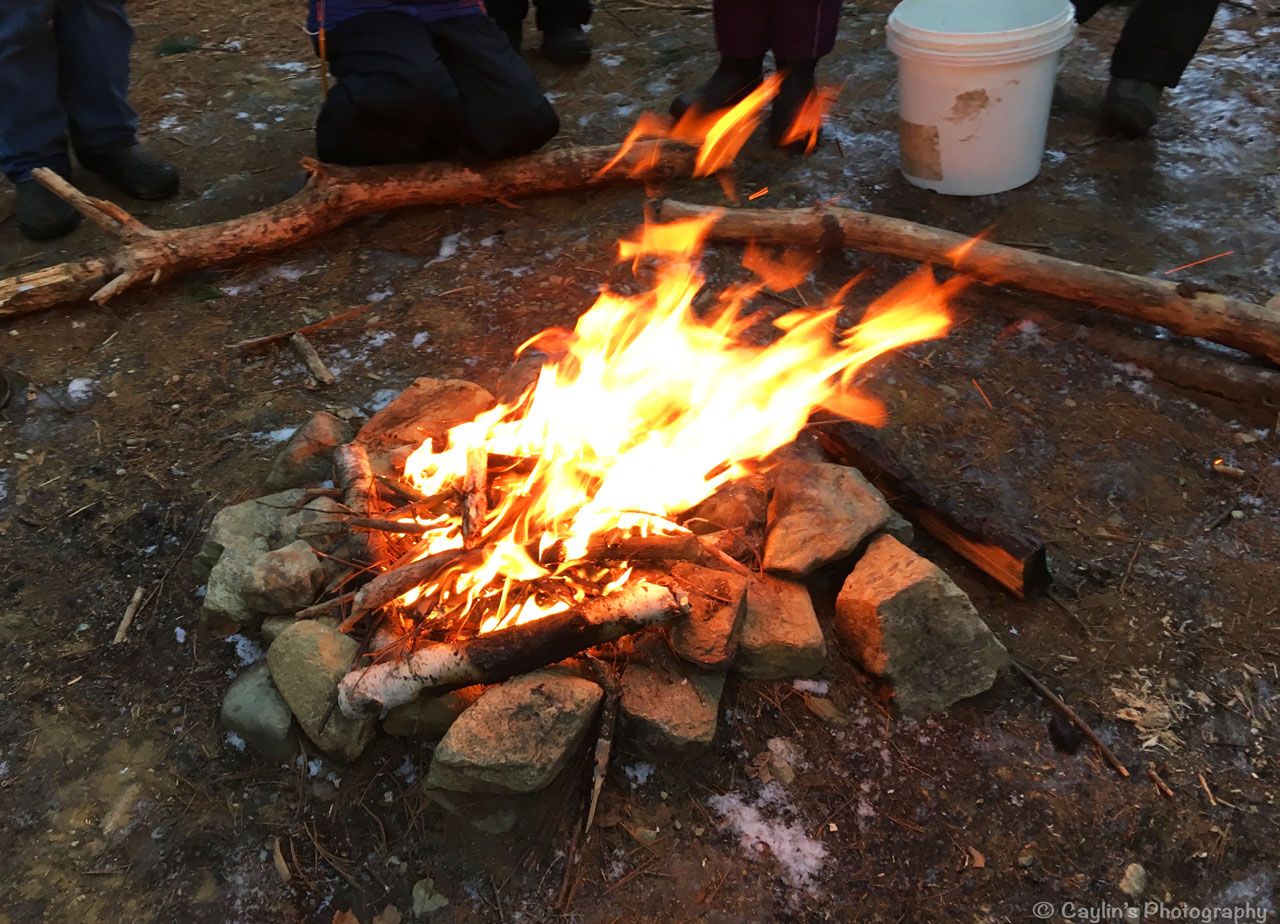
Blog
Stories from my personal journey learning about and delivering Nature-rooted programs across three different countries
Learning through taking risks...
Caylin (Forest Schooled)

Empty space, drag to resize
I took a risk. It was the coldest day we'd had in the school year so far and nobody was quite back in the mindset of playing in cold weather. But the children had their coats and waterproof boots on and it felt like a great opportunity to go and visit the stream to notice and learn about seasonal changes.
Taking children to a cold body of water on a chilly day (granted it was not yet below zero). That was a risk. And that risk also came with benefits (like learning about seasonal changes, connecting with the natural world in early winter, understanding how temperature effects water, learning to keep themselves safe) … so was it worth taking?
Adhering to a risk benefit assessment, I followed certain precautions to address the hazards/risks, including
- having a discussion with the children beforehand about the change in temperature of the water since the last time we were there
- having the ability to light a fire and serve hot drinks should anyone need to warm up
- bringing extra clothing (just in case)
- consideration that our site is not very far from the school building
- noting that the children were dressed in waterproof boots and rain gear
So we took the risk.
We went to the stream. Most of the children explored by going in to the water only up to their ankles and therefore stayed dry. However, some started to splash around quite a bit and one boy who loves being outdoors and who had in fact joyfully dunked himself in this very stream in the summer last year, decided to do it again...
Under the water he went, head and all! It was obviously exhilarating for him and he came out with a huge smile on his face.
I didn't want to dampen his experience, but I didn't want to celebrate it either out of concern that being that wet in cold temperatures had increased the level of risk for this activity... So I expressed unease about the situation to him, but he exuberantly exclaimed he was totally fine! He's quite an independent and resilient child and I didn't want him to feel like I didn't trust him.
So I decided to keep my eye on him and asked him to please let me know if he did start to feel cold...
Before we left the stream I brought the group back together to get ready to head back to our base camp. I confessed to them that I actually had pretty significant concern about how wet some of them had become. I asked them if they knew what happened to the human body when it gets submerged in really cold water? One of the children shouted "I do! Hiptherbia!" (It was a close guess! One of his parents works in emergency services so this wasn't too surprising). I asked him if he wanted to explain what that was and he did a relatively good job of it. I hadn't plan on facilitating a mini lecture on Hypothermia, but the moment naturally lent itself to it and I took advantage. It was a learning opportunity for all of us.
We then went back to base camp and lit a fire. I kept watching the boy and checking in on him. He kept saying he was fine until finally he stated that he wasn't anymore. He was cold. So I brought him over to our stash of spare clothing, stripped his wet outerwear off and wrapped him in a dry and warm scarf, hat, and coat and suggested he go sit by the fire which he did most willingly.

A few minutes later I asked how he was feeling and he indicated he was much more comfortable and warm. I asked him if he'd learned anything from the experience. He said, "That swimming in the winter isn't a good idea!" I inquired curiously whether he would do it again and he exclaimed assuredly "NO!" shaking his head vigorously. He'd taken a risk. And he'd learned from that risk. So had I.
The next week when we brought out our group agreement flags (see previous post - Intervening in Children's Play) I asked the group if we could add something to the "Look after ourselves" flag.... I suggested "Stay dry when it's cold?" The group all agreed unanimously that was a good agreement to abide by!
P.S. I think it's also worth noting that I do my best to have really clear communication with the children's parents about the benefits of risky play, what to expect in terms of play near risky elements (like water and fire), and how we (as a team) can support this play whilst also maintaining a reasonable level of safety. This communication and building of trust has proved vital for the success of this program and has helped ensure we're all on the same team when something like the event described in this post happens!
References:
Ball, D., Gill, T., & Spiegal, B. (2012). Managing Risk in Play Provision: Implementation guide. Play Safety Forum. Retrieved from http://www.playengland.net/wp-content/uploads/2015/09/managing-risk-in-play-provision.pdf
More Posts
WANT TO GET FOREST SCHOOLED TOO?
Subscribe to my email letters, something special from me to you so we can learn together. Each one is filled with heart-felt stories from the forest, resources you may find useful, and things that hopefully bring a smile too.
Thank you!
© by FOREST SCHOOLED
